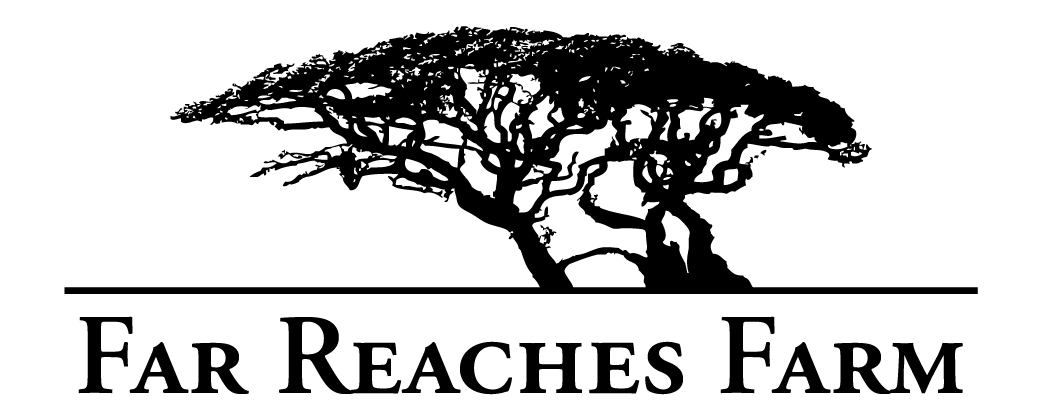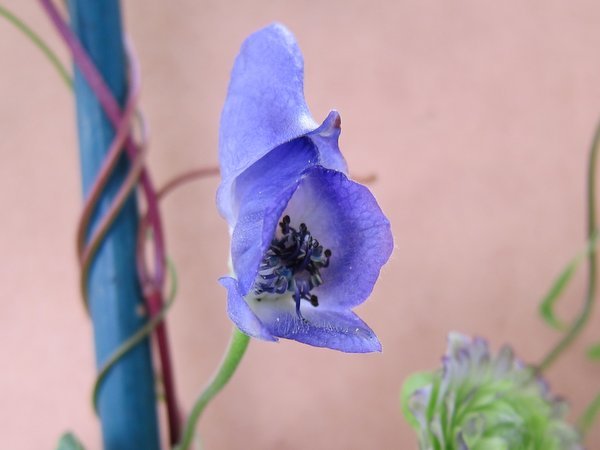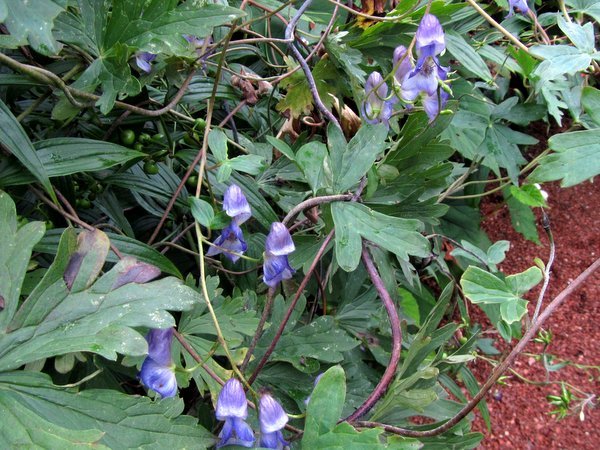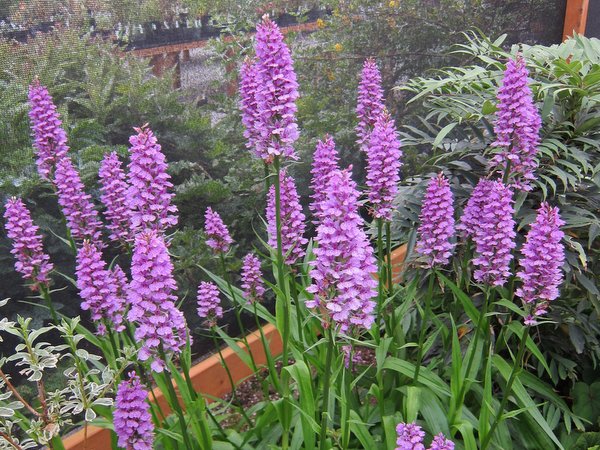Sort by:
1758 products
1758 products
Climbing Monkshood. This is from our seed collection on the Chongqing-Guangxi-Guizhou expedition in 2010. We found this on the summit of the previously unbotanized highest peak in the Wumingshan where it was clambering about on the top of the short scrub. We were struck by the large seed pods. Light to mid-blue flowers on stems that can reach 10'-15' on this vining Monkshood. This a widespread and variable species in China one we find most appealing.
Variegated Pagoda Dogwood. A variegated form of this alternate-leafed dogwood that is quite choice and can be seen in our shade garden. This lacks the big bracts of our native dogwood but still has true creamy scented flowers arrayed in flattened disks along the tiered branches. Superb foliage and form and is rock hardy.
High elevation Bolivian evergreen pinnate-leaved tree in the Rose family whose gorgeous irregular shape and exceptional exfoliating bark gives us fever dreams. Flowers are apetalous nothings but given its abundance of attributes, expecting showy petals is akin to disappointment in the physical shortcomings of the Duke in The Bridgertons. The Polylepis species we have observed in adjoining Argentina basically grew in rock with roots reaching down to moist soil so best in a lean, mineral-based soil that drains well. Small plants that will grow quickly. The collector speculated Z6b hardiness but ours has only gone to 10F with no damage
A variety of P. fruticosus found only in the Blue Mountains in Washington, Oregon, and Idaho. This variety hugs the ground, forming mats up to 3ft wide covered in pale pink to lavender flowers in mid-summer. The toothed leaves separates this from other varieties of fruticosus. Full sun and ideal in well-drained lean rock gardens.
Seedlings from this very good named form of the very variable Anemone obtusiloba which ranges at higher altitudes across the Himalaya into western China. Our mama plant came home with us from Scotland and is notable for larger blue flowers with 3-4 extra petals beyond the usual 5. We expect these youngsters to carry on the family tradition. Starts flowering early in spring with main flush in late spring but sporadic bloom during summer. A small species suited to a larger trough, rock garden or special spot in light shade.
A selection from the native plant specialists at the former Fairmeadow Nursery who made a habit of looking for good forms of Northwest natives. Large evergreen shrub that is tough as all get out liking sun and dry while shaking its showy tassels derisively at the deer since the hoofed rats won't eat it. Late winter long green catkin-like tassels appear just in time to give hope for spring flowers and keep you from doing yourself harm.
Quirky little evergreen vine from the Mediterranean that brings delight far out of proportion to the size of its flowers. Small curved pipe-like flowers are a subtle burnished pale flesh on the outside accented by thin reddish lines. The flared pipe bowl is a perky yellow with faint lines in the back of the throat and a rim of umber, delicately whiskered. This was born to infiltrate the small shrubs in the maquis which gives protection from goats or is perfect on its own as a wiry tangled mound sprinkled with flowers in the rock garden.
A Schefflera of smaller stature with a need to please. This flowers when quite young with spherical clusters of creamy-white flowers followed by even showier balls of black fruit. Self-fertile, this handles the reproductive function nicely on its own which is all the rage in this era of the pandemic. A Far Reaches Botanical Conservancy Offering. Nice gallon size. Of narrow habit, this is a good choice for smaller, mild gardens.
One of the sweetest little groundcovers we have grown. Aside from the small terminal clusters of deep blue flowers in late spring and early summer, we are taken by its good evergreen foliage and year-round tidy appearance. It is in one of our troughs and spills over the lip perfectly. Good for the rock garden.
One of the many forms of Saxifraga paniculata from the mountains of Europe. We received this with the name of 'Freckles' but find no reference to this name in the various sources where if it were valid, it would be listed. Therefore we assume it is a synonym of 'Punctata' as both refer to the heavy sprinkling of red dot on the petals of the white flowers. Excellent trough or rock garden plant and wouldn't mind a little shade during the hottest blaze of the day although we grow ours in full sun but never let them dry out.
Sweet Wakerobin. One of the best Trilliums you can grow, this has some of the largest flowers in the genus and the news just gets better because these flowers are not only big but deep red. Stunning, hanging ornaments. We seldom offer these which we have grown from seed but every so often we have to let a few go as proof of progress for our therapist that we are managing our plant hoarding dysfunction.
A few think is a hybrid or perhaps the closely related G. angustifolia but it makes no difference in the garden however as this is riveting with freely produced large trumpets that scream BLUE!!!! Really quite impossible to assess this taxon objectively when you are totally gobsmacked by the flowers. A selection we brought home from Scotland.
Progeny from a San Francisco Botanical Garden introduction from high elevation in Guatemala. High there still means frost sensitive but what a showoff in zones 9&10! Mass red flowers summer into winter with the lower three petals contrasting apricot. Evergreen shrub to 5-'6'+ tall and as wide. Ours in pots feed the overwintering greenhouse hummers.
Saxifraga cochlearis is native to the southeastern Alps and this form 'Major' is speculated to be a hybrid with S. callosa which would account for its extra vigor. Not a bad thing at all! This makes clustered rosettes of foliage encrusted in silvery deposits and has white flowers in spring. Good in a trough or rock garden.
Nice smaller hybrid between Mexican and American species which combines good vigor with sun and low water needs and a floral jewel box of garnet colored flowers in summer. Everyone wants to lay out the banquet table for hummingbirds and this should have them coming back for seconds. Good in the rock garden.
Found in Boone North Carolina by an extension agent, this Glad is possibly a hybrid with dalenii and has pretty awesome cold hardiness having proven itself in zone 6. July flower spikes to 4' with apricot flowers touched in peach at the petal tips as well as in the throat. Very good increaser as this makes numerous cormlets so spread the love.























